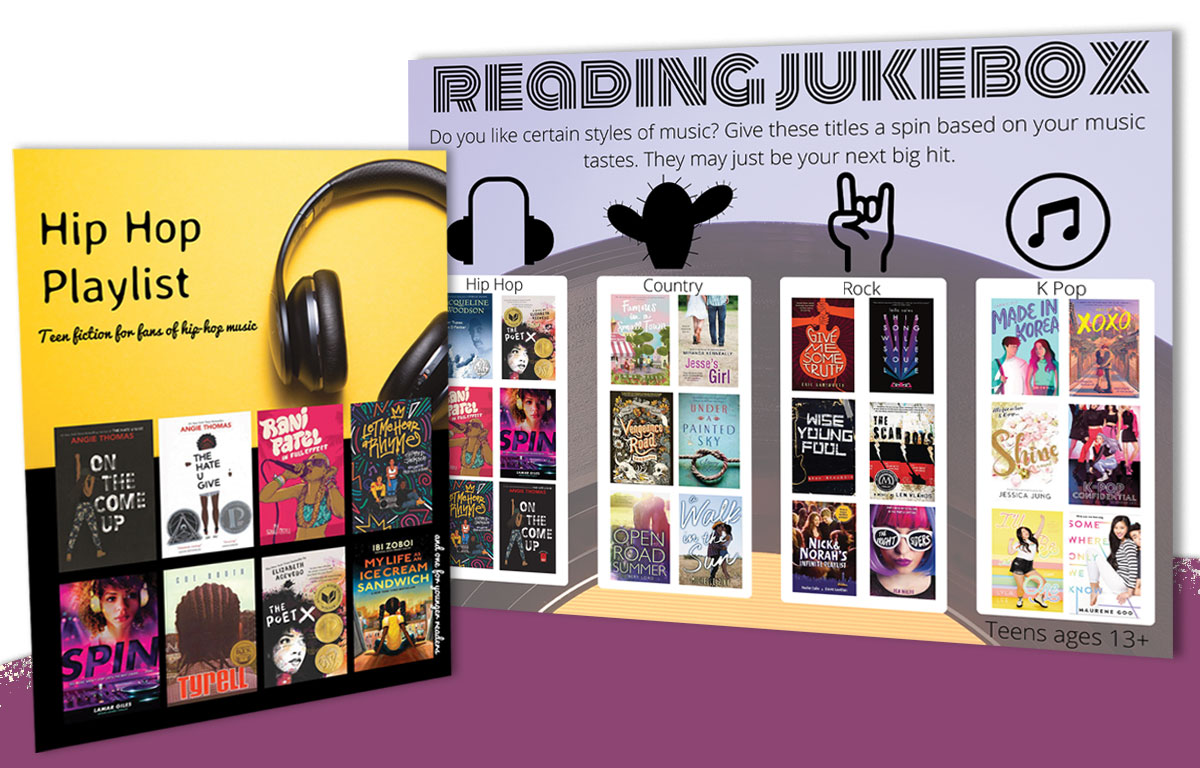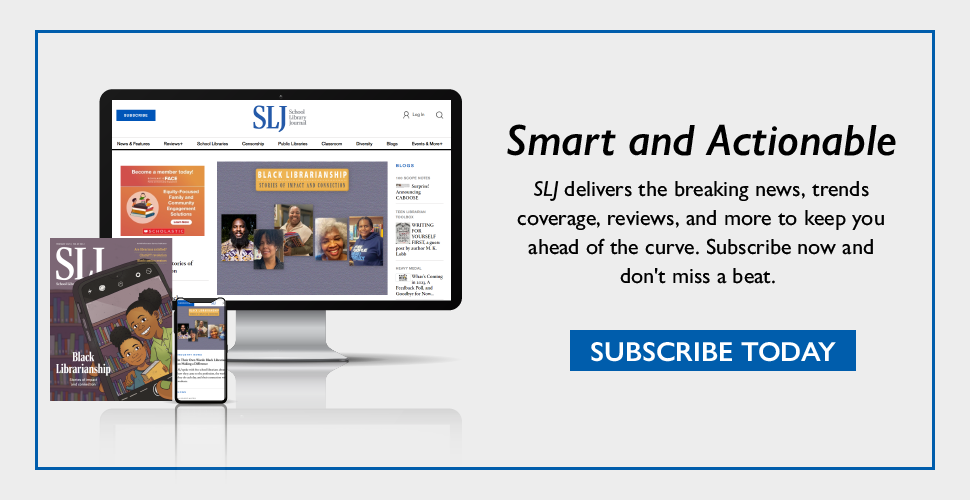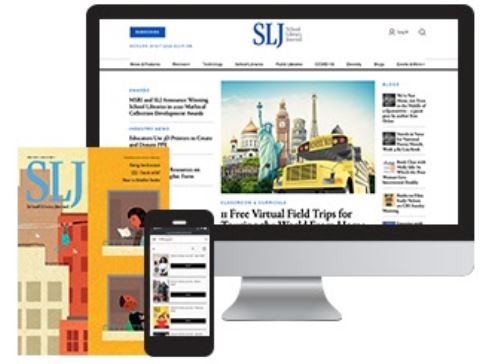Jukebox RA: Connect Books to Music
In her quest to get teens reading at the Fort Worth (TX) Public Library, librarian Karen Jensen uses music as the foundation for readers' advisory.
 |
Images courtesy of Karen Jensen |
Music imprints on the brain. Favorite songs release feel-good chemicals like dopamine and serotonin, and the impact is even greater with the music we hear and love between ages 12 and 22, when hormones and neurological development ingrain these songs into our brains like no others.
In my quest to get teens reading and find new ways to do readers’ advisory at the Fort Worth (TX) Public Library, I use music as a foundation of a series of RA tools I call “Jukebox RA.” The premise is simple: it’s like you’re walking up to a jukebox—or picking an artist on a streaming service—but instead of a song, you get a book recommendation based on musical preferences.
First, talk with teens about who is popular. Jukebox RA doesn’t work if you aren’t using music that teens are listening to or are at least familiar with. Keep an eye on the charts, too.
Then, do some research. I’m not going to lie—I start by Googling to see if someone else has done a bulk of the work for me. Places like Fierce Reads, Epic Reads, Read Brightly, and various publishers often put out music-based RA lists as promotional tools. That information is the starting point. A simple “if you like Taylor Swift read” search will get a lot of hits. And you can replace Taylor Swift with any artist or musical genre.
Don’t forget to ask for help from your peers. Throw out a question on social media for YA readers and fellow librarians.
Jukebox RA falls into five categories.
1. Books about music in general
2. Books if you like various musical genres
3. Books if you like a particular artist
4. Books to read if you like a particular album, song by song
5. Books with titles from song lyrics
Music in general. Do a subject or keyword search to find the books that feature teens who want to be musicians, are fans of musicians, or engaged in things like musical theater, for example. A quick Google search of something like “young adult fiction music” will give you plenty of recommendations as well.
Musical genres. Books that are similar to a specific musical genre can take a bit of a deeper dive. You can create lists with books for lovers of K-pop, hip-hop, bubblegum pop, etc..
Artist. Sometimes an artist comes along who captures the zeitgeist and makes a great basis for Jukebox RA. This past year, both Beyoncé and Swift broke records and captured hearts, making them great foundations. Both artists have a repertoire that is often broken up into “eras” or specific aesthetics, which is also a strong foundation. Artists with an aesthetic, like Billie Eilish or Olivia Rodrigo, or artists with repeat themes, like Sza and Sabrina Carpenter, work best. You need a hook to bring your poster or display together.
Album. For a deeper dive, go album based and match each song to a book or two. Listen to the artist and album. Several years ago, I did this with Eilish songs. Sometimes you can find lists online to work from, which is a good way to get started. If you aren’t familiar with the artist, Google song lyrics and their meanings. You can pair by mood or meaning, or both.
Song lyrics. As a Swift fan myself, I recently realized that a lot of new teen/YA books have titles that are song titles or lyrics from Swift’s various albums. Doing some research, I discovered it goes beyond Swift and isn’t new. There are many opportunities to match book titles to song titles.
The design
I primarily use Canva for the actual creation of my RA tools. This allows me to create a template to copy and change the elements like book covers, colors, and wording. It’s quick and easy, and having similar layouts and formatting creates recognizable branding. With a glance, teens know it’s part of the Jukebox series.
Be extra careful to make sure that your design captures the aesthetic of the music, album, or artist without violating any copyright. For example, the Taylor Swift Eras Tour has specific colors and symbols, like a snake for the Reputation album, that you can use in your design. But you can’t use actual pictures from the albums or artists. You’ll also want to be careful to use wording like “inspired by the music of Taylor Swift” to make sure you aren’t giving the impression that the artist you are referencing is endorsing the books or your library or is involved in any way in the creation of your RA tools. As with all things involving copyright, exercise caution and be especially careful if sharing them on social media.
The goal is to take something teens love—music—and get them reading books from the collections.
Shuffle, mix, read, repeat.
Karen Jensen is the teen services librarian at Fort Worth (TX) Public Library. She blogs at “Teen Librarian Toolbox” (slj.com/teenlibrariantoolbox).
Add Comment :-
RELATED
The job outlook in 2030: Librarians will be in demand
The job outlook in 2030: Librarians will be in demand
ALREADY A SUBSCRIBER? LOG IN
We are currently offering this content for free. Sign up now to activate your personal profile, where you can save articles for future viewing





